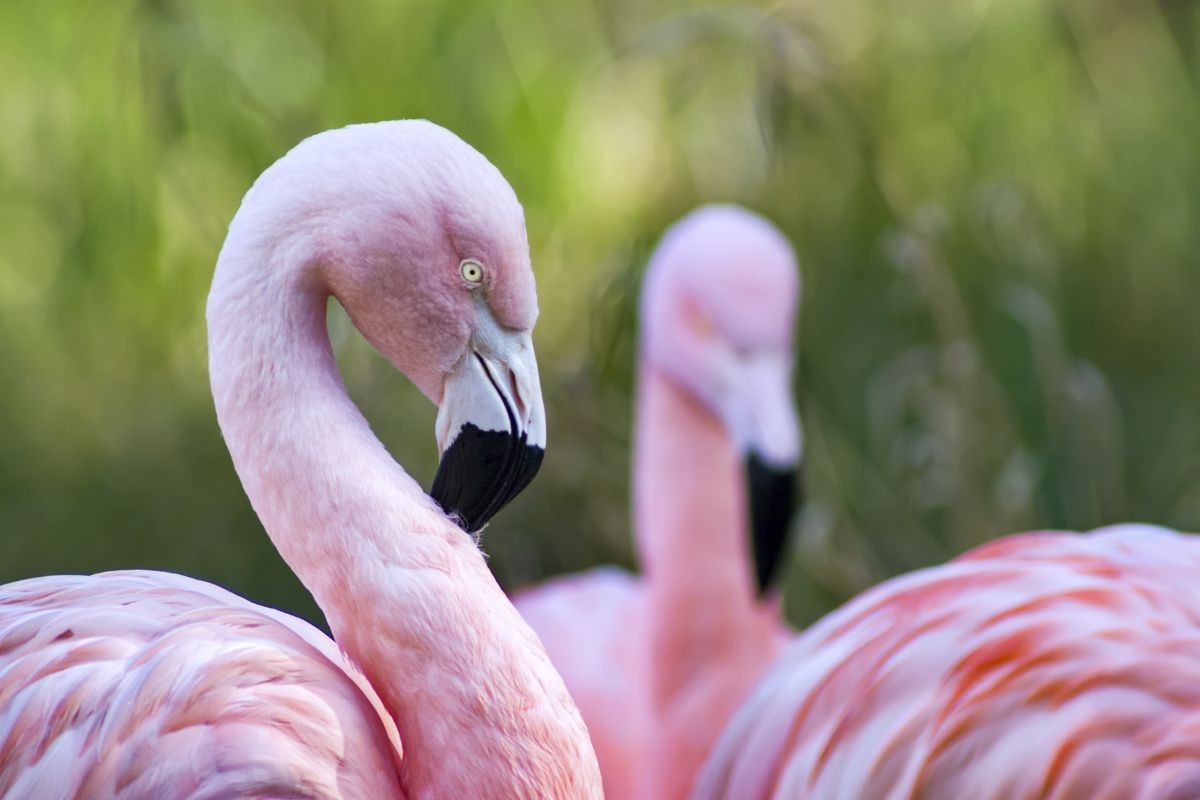Flamingos are iconic for their striking pink plumage. These elegant birds are almost immediately recognizable thanks to their vibrant color, often associated with tropical sunsets and exotic locales. While they aren’t born with this signature pink hue, developing it over a few years thanks to their diet, many wonder: can adult flamingos lose their pink feathers? The answer, as many attentive observers and perhaps even parents might suspect, is yes.
The Mystery of Fading Flamingo Pink
It might seem unbelievable, but flamingos can indeed lose their distinctive pink coloration. The secret behind a flamingo’s vibrant shade lies in its diet. The pink color isn’t inherent to their feathers; it’s derived from pigments called carotenoids, specifically beta-carotene, found in the crustaceans and algae they consume. These pigments are the same compounds that give carrots their orange color. When flamingos digest these foods, the pigments are deposited in their feathers, skin, and even egg yolks, resulting in their characteristic pink to reddish tones.
If a flamingo’s diet were to change drastically, lacking in carotenoid-rich food sources, they would theoretically revert to a paler shade, potentially even white or grey. However, in their natural habitats, flamingos are adept at finding their preferred food. The primary reason for a flamingo losing its pink color is often linked to the demanding process of raising young chicks – parenthood.
Parenthood: The Pink Drain
Raising a flamingo chick is an energy-intensive endeavor for both parents. Flamingo parents, both male and female, produce a special “crop milk” to feed their young. This crop milk is incredibly rich in fat and protein, and surprisingly, it also contains carotenoids. As parents dedicate themselves to feeding their chicks, they transfer a significant amount of these pink pigments through their crop milk. This transfer of carotenoids to their offspring can lead to a noticeable fading of the parent’s own pink coloration.
Dr. Paul Rose, a zoologist at the University of Exeter, explained to Science Focus that this temporary loss of color is often observed outside of breeding season. He stated, “Flamingos – both male and female – can lose their pink pigments outside of breeding season… That’s because the breeding is so intensive and so much of their food is used for their chicks. During this time their white color basically means, ‘Please leave me alone. I’m a little bit exhausted from breeding – I’ll join in the dancing later.’” This temporary paleness can almost be seen as a signal, indicating a flamingo is temporarily depleted due to parental duties.
The Return to Rosy Hues
Fortunately, this loss of pink is not permanent. Once the chick matures and becomes independent, the parent flamingo can replenish its carotenoid levels by resuming a diet rich in algae and crustaceans. As they consume these foods, the pink pigments will once again be deposited in their feathers, and their vibrant color will return. Think of it as a temporary “pink drain” that reverses itself with time and a proper diet.
From Grey to Pink: The Chick’s Journey
It’s important to remember that flamingo chicks are not born pink. They hatch with grey or white downy feathers. The transformation to pink is a gradual process that takes a couple of years. Young flamingos need to consume a sufficient amount of beta-carotene through their diet to facilitate this color change. This explains why it takes time for them to develop the iconic pink plumage we associate with adult flamingos.
Pink Flamingos: A Colorful Conclusion
So, while the idea of a flamingo losing its pink might initially seem disheartening, it’s a natural phenomenon often linked to the demanding but rewarding role of parenthood. Flamingos are dynamic creatures, and their color is a testament to their diet and life cycle. The next time you see a flamingo that appears less vibrantly pink, remember it might just be a devoted parent, temporarily sacrificing its own color for the well-being of its chick, before returning to its full rosy splendor.

